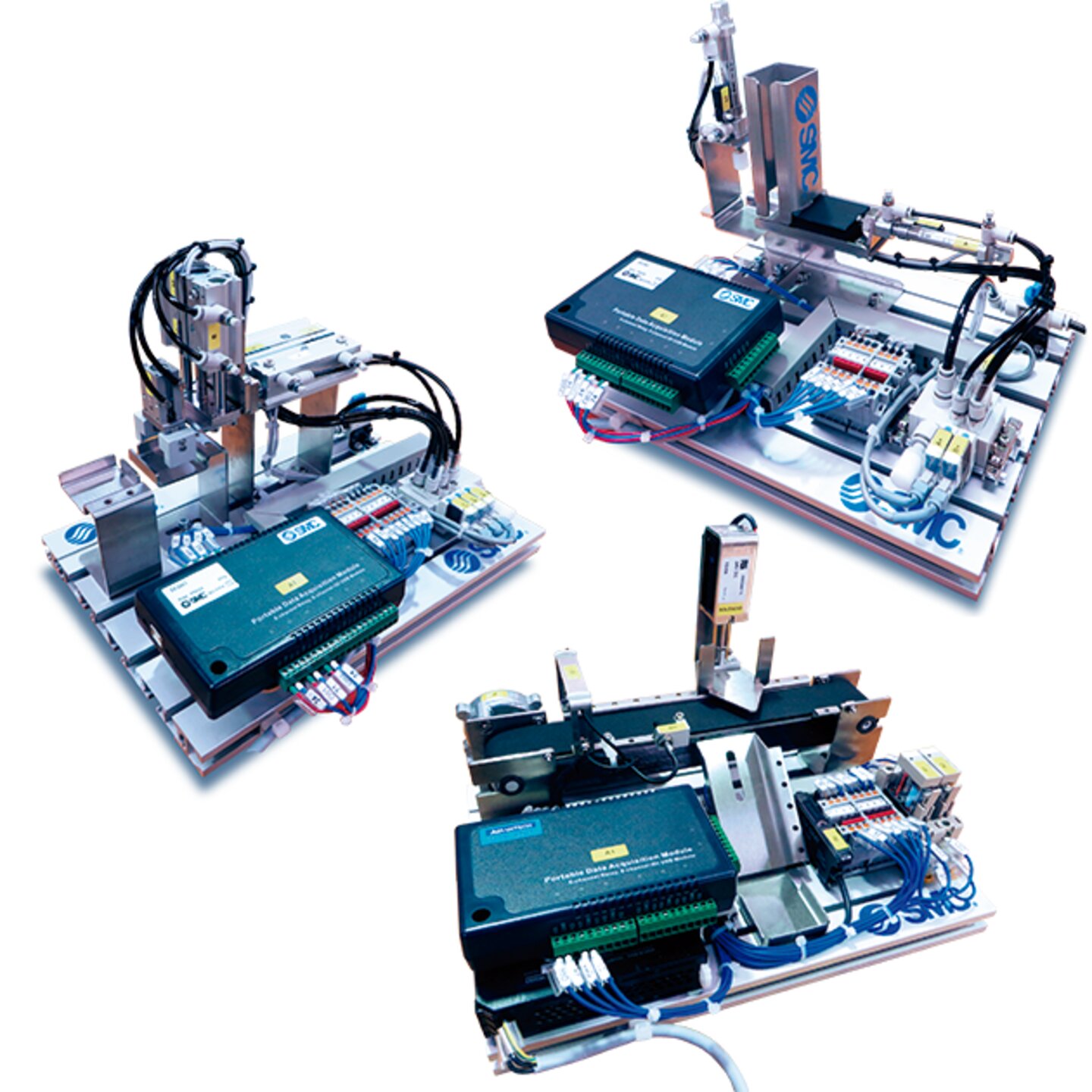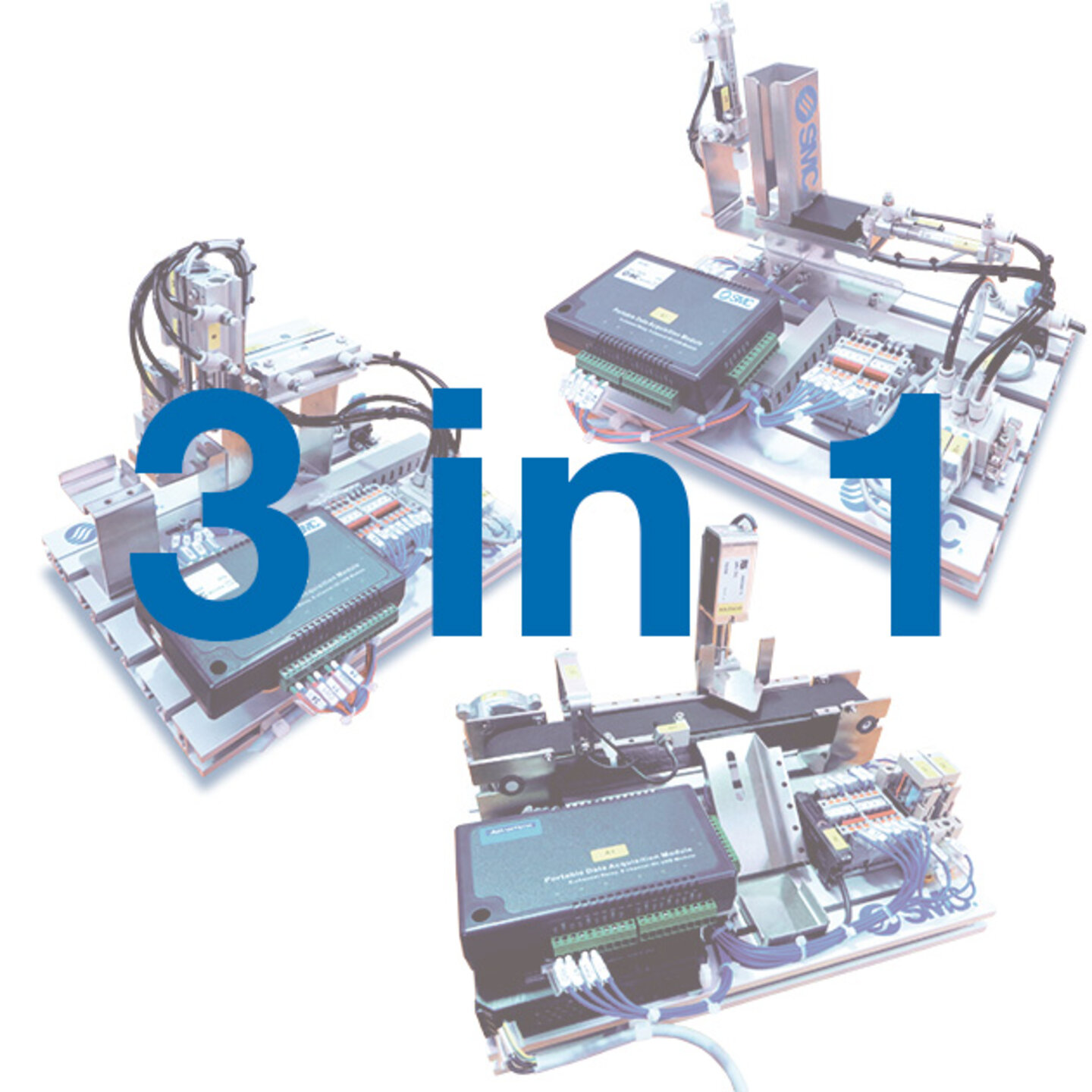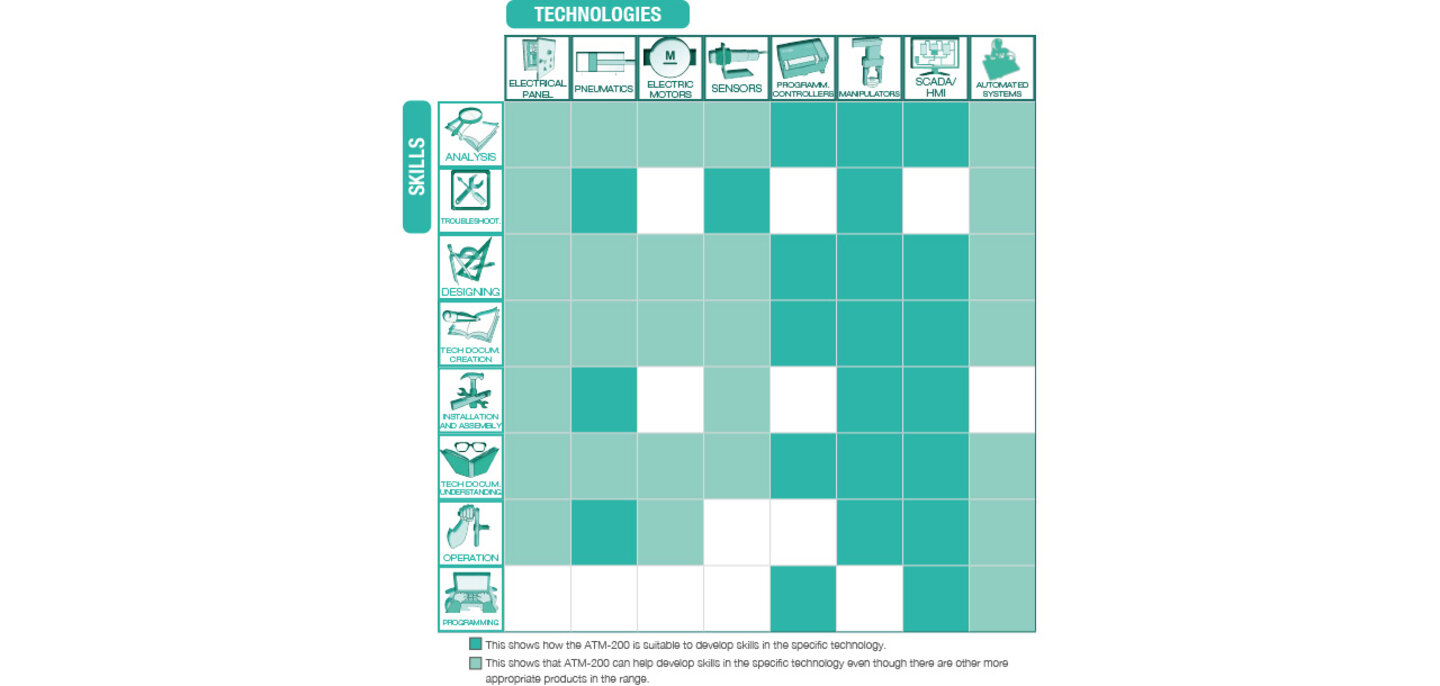Three in one
The system includes 3 independent stations, which perform part feeding, pneumatic handling with gripper and part transfer with conveyor belt.
Ease of use
The stations are controlled through the 3D application software autoSIM-200 (licenses included), which is an intuitive and user-friendly environment (PC not included).
Ready to run
The stations are delivered fully assembled and with the autoSIM-200 3D software applications fully programmed to control the stations.
Compact
Each station has a footprint of 200x300 mm, ideal for placing them on any desk and storing them when finished using them.
Storage
Each station is delivered in a Eurobox, ideal for storing the stations when not in use.


